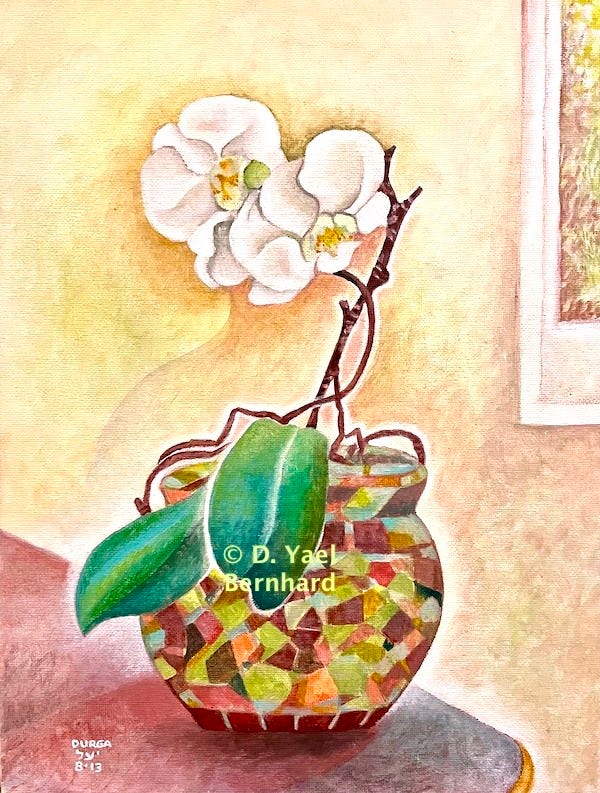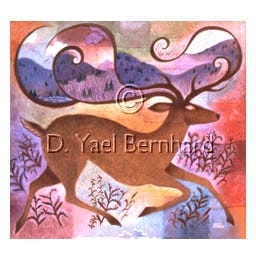Still Life With Orchids
This was my very first oil painting. The year was 2013, and I had just obtained my first set of water-based oils, a new product that made oil painting much less smelly and toxic. I had avoided oil paints for years, not just for those reasons but also because of my aversion to canvas. The artificial texture of gesso turned me off. I loved paper – especially textured paper, which I often allowed to show through as part of my paintings. I worked small, usually in gouache paint, which cannot cover large surfaces; occasionally in acrylics.
But time has its way with our predilections, and as the years passed I found myself wanting to work larger, and increasingly unwilling to deal with matting and framing works on paper. Glass was expensive, fragile, and heavy. Canvases are delicate, but light and easy to hang. They do take up a lot of storage space, but . . . well, there’s no perfect solution.
I also wanted to try oils because of their viscous quality, and the marvelously subtle blending that can be achieved with this sensual medium. The idea that the canvas could be covered with paint, with no undersurface showing through, began to grow on me. I was craving gradients, and had gone as far as I could in creating them with water-based paint.
So I grabbed one of my houseplants, an orchid in a handmade ceramic pot that had been gifted to me, and set about practicing with my new oils. I’ve never used conventional oil paints, which I suspect have a finer quality than the somewhat-gloppy consistency of water-based oils. It’s not easy to articulate fine detail in this medium, and I still resort to acrylics for that. Many of paintings now have an underlayer – a monochromatic “brush drawing” in acrylics, with oil painted on top of that. This way, I get the best of both mediums.
The composition of this painting is a combination of centered and off-center elements. If you’re familiar with my work, you might recall that I love diagonals. The leaves and stem of the orchids, and the tilted face-like flowers, were challenging to bring into harmony, but the diagonals made it possible. The irregularity of these elements helps the plant look alive. The table and the hint of another painting in the background act almost like counterweights.
Eight years later, I still feel very much like a beginner in this new medium. Backgrounds are handled differently in oil paints – especially portraits, which to me this is. As an illustrator, I’m used to creating backgrounds that are full of subject matter. This one is very plain – which I like, but it was ever so difficult to hold myself back from activating it further. I still need more practice.
This painting is for sale. Please inquire for more information if you’re interested.
A good week to all!
D. Yael Bernhard
https://dyaelbernhard.com
Have you seen my other Substack, The Art of Health? In addition to being a visual artist, I’m also a certified integrative health & nutrition coach with a lifelong passion for natural food cooking and herbal medicine. Now in its second year, this illustrated newsletter explores cutting-edge concepts of nutrition. I strive to make relevant information clear and accessible, and to anchor essential health concepts in unique images. Check it out, and if you like it, please subscribe and help spread the word. Your support keeps my work going!






